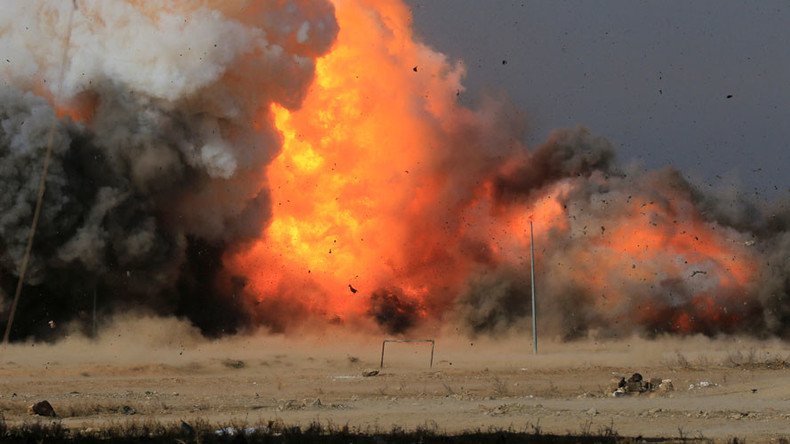Forget the ‘mother of all bombs,’ meet the Russian-made ‘daddy’

The US boasts that its GBU-43/B Massive Ordnance Air Blast bomb (MOAB), known as the ‘Mother of all bombs’, is the largest ever non-nuclear bomb used in combat but, don’t be fooled, Russia possesses something far superior. Kids, meet Daddy.
The Aviation Thermobaric Bomb of Increased Power, known as the ‘Father of all bombs’ (FOAB), was developed by Russia in 2007 and eclipses its US rival in both power and efficiency.
It can inflict a 44 ton-yield when detonated, compared to the 11-ton-yield of the mother. Unlike its US counterpart though it’s less hefty, weighing in at 7,100kg compared to 8,200kg.
READ MORE: Meet the ‘Mother Of All Bombs’: 6 facts about bomb Trump dropped on Afghanistan
The FOAB explodes mid-air, combining with atmospheric oxygen to extend the blast radius as it vaporizes targets and collapses structures. Gases are burnt within the vicinity of the blast producing a vacuum, which can drag objects in towards the center of the explosion.
Following its 2007 test, the location of which is unknown, the targeted area was left with scorched earth described as looking “more like the surface of the moon.”
Alexander Rukshin, a deputy chief of the Russian armed forces, said at the time it showed “its effectiveness and capabilities are comparable to nuclear weapons. At the same time use of this weapon does not damage or pollute the environment, like nuclear weapons.”
Russia’s defense ministry said its development did not contradict any international arms agreement, insisting it’s not the start of a new arms race and that the FOAB would replace smaller nuclear bombs in its arsenal.
The FOAB differs in one significant way to the MOAB though – Russia has never felt the need to use it.
BREAKING: US forces in Afghanistan released footage of #MOAB strike against #ISIS targets https://t.co/ltRyZ4plcZpic.twitter.com/wuX1FvPSd8
— RT (@RT_com) April 14, 2017












